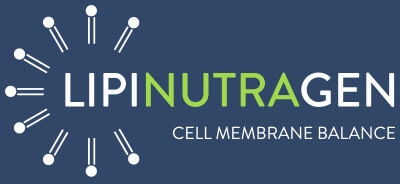
Reading the food labels with the lipidomics’ help


Tips for a balanced shopping cart
It is now known that following a varied and balanced lifestyle is the basis of well-being and prevention.
Where do you start to lead “a life in balance”? Certainly a fundamental element is nutrition.
In this respect, several paths open which, in order to achieve and maintain the objective of well-being, should be followed in parallel:
– pay attention to the way you purchase (composition of the shopping cart)
– seek advice from a professional in the sector
– be mentally open to change and/or follow a varied, healthy and balanced lifestyle.
Let’s start from the apparently simplest way: the moment of food shopping. To compose a balanced shopping cart it is essential to take a look at nutritional facts labels and know them.
A careful look at food labels
With the label, the consumer can better evaluate the products to buy and bring to the table, or be aware of how many fats, sugars and other components make up his diet, where the ingredients come from, so that he can choose the best for himself and, above all, for his own health.
Each packaged food product, by law, has the nutritional label with certain information, imposed by Regulation (EU) 1169/2011. In recent years, in order to improve the readability and understanding of the information on the label, some innovations have been introduced, shown below.
The food label must include:
- Name of the food;
- List of ingredients: all substances used in production listed in order of quantity (weight), from the most present to the least, with an indication of the allergens and the specific origin of any vegetable oil / vegetable fat used (eg coconut , soy, palm), whatever the amount of oil or fat present in the food
- Expiry date or minimum storage term;
- Storage and use conditions after opening;
- Country of origin and place of provenance: mandatory indication for beef, fish, fruit, vegetables, honey, extra virgin olive oil, fresh or frozen pork, sheep, goat and poultry meat;
- Nutritional Declaration: mandatory indications on energy value, fats and the related category of saturated fatty acids, carbohydrates, sugars, proteins, salt, all calculated in 100 g or 100 mL of product.
The food choice relentlessly influences diet and well-being; It is essential to know how to decipher the nutritional labels and information given on the packaging of food products. Let’s start with fats!
The fats on the label
Thanks to the declaration of the nutritional values, it is possible to evaluate the fats that are taken, or the nutritional label shows the total fats and saturated fats that are a part of the total fats. The rest of the fats, which are not saturated, can be of two types: monounsaturated and polyunsaturated, but it is not mandatory by law to indicate their content in total fats.
However, with a little effort by the consumers themselves, we can understand what fat, the food is made of, by using two actions: a simple math calculation and a careful reading of the ingredients shown on the package. In practice, to know the quantity of unsaturated fatty acids (i.e. monounsaturated and polyunsaturated) it will be sufficient to subtract the two quantities indicated on the label, namely:
Unsaturated fats = total fats – saturated fats
Furthermore, by reading the list of ingredients and identifying the type of oil or fat used in the preparation, you can know the quality of unsaturated fats.
To give an example: if the use of olive oil is listed in the list of ingredients, it will mean that the share of unsaturated fats will be predominantly monounsaturated, since olive oil mainly contains oleic acid (monounsaturated). If instead sunflower oil is reported, then the share of unsaturated fats will be polyunsaturated from the Omega-6 series since the sunflower oil contains omega-6 linoleic acid. If the content is high oleic sunflower oil, this type of oil – although it is sunflower – contains oleic acid, that is, it comes from a variety of sunflower that mainly produces oleic acid.
Read the lipidomic key labels
There is a connection between the fats that we introduce from the daily diet and the formation of healthy cells, therefore the optimal state of health. This connection is explained by LIPIDOMICS, the now well-known “science of fats” (lipidomics derives from lipids, or fats), which gives us a key to understanding food labels, understanding the value of fats to feel good. Consequently, if we read the type of fats described on the label, we become more aware of which foods we put in the shopping cart. Lipidomics helps us make qualitative and quantitative choices in order to keep the body’s fats in balance for our health.
International recommendations on the use of total fats define 45-77 g / day for women and 55-97g / day for men as necessary in the daily diet; these intervals are wide, because the quantities vary according to body size and physical activity. The basic principle, supported by lipidomics, provides for a balance in the intake of the 3 types of fat: saturated, monounsaturated, polyunsaturated. So even if you are not a specialist, you can try every day to achieve this balance by reading the fats and choosing the foods to put on the plate.
As regards saturated fatty acids, taking into account that these fats are also synthesized in our body, we must respect the limits of intake; for women there is talk of a maximum of 22g / day and for men of 27g / day, always in relation to body condition and physical activity, in an optimal state of health. The major international food and health agencies (WHO, FAO; EFSA) generally recommend replacing saturated fats with monounsaturated fats in the diet, therefore even the quantities indicated above can decrease precisely through the choice of appropriate ingredients.
Monounsaturated fatty acids, to be preferred over saturated fatty acids, are precious allies for the body together with the polyunsaturated fatty acids Omega-6 and Omega-3. The latter (Omega) are called essential fatty acids, to indicate that the human body is not able to produce them and therefore must necessarily take them through food. The diet must include adequate sources of omega-6 and omega-3 (always balanced with each other!) because otherwise deficiencies can arise which have a very serious effect on the state of health.
Based on what has been written so far, the goal in daily shopping is to choose foods whose food labels present:
– total fat content not exceeding 15-20% of the food components;
– lowest possible share of saturated fatty acids (preferably less than 20-25% of total fats).
References:
C. Ferreri, “Dalla parte dei grassi. Lipidomica in cucina; perché i grassi non sono tutti uguali e dobbiamo conoscerli”, Edizioni Mind, 2019
Article edited by the Lipinutragen Editorial Board
Foto: 123RF Archivio Fotografico: 23387221 ©tanialerro /123rf.com | 25987636 ©Jean-Paul /123rf.com
- On 17 January 2020



